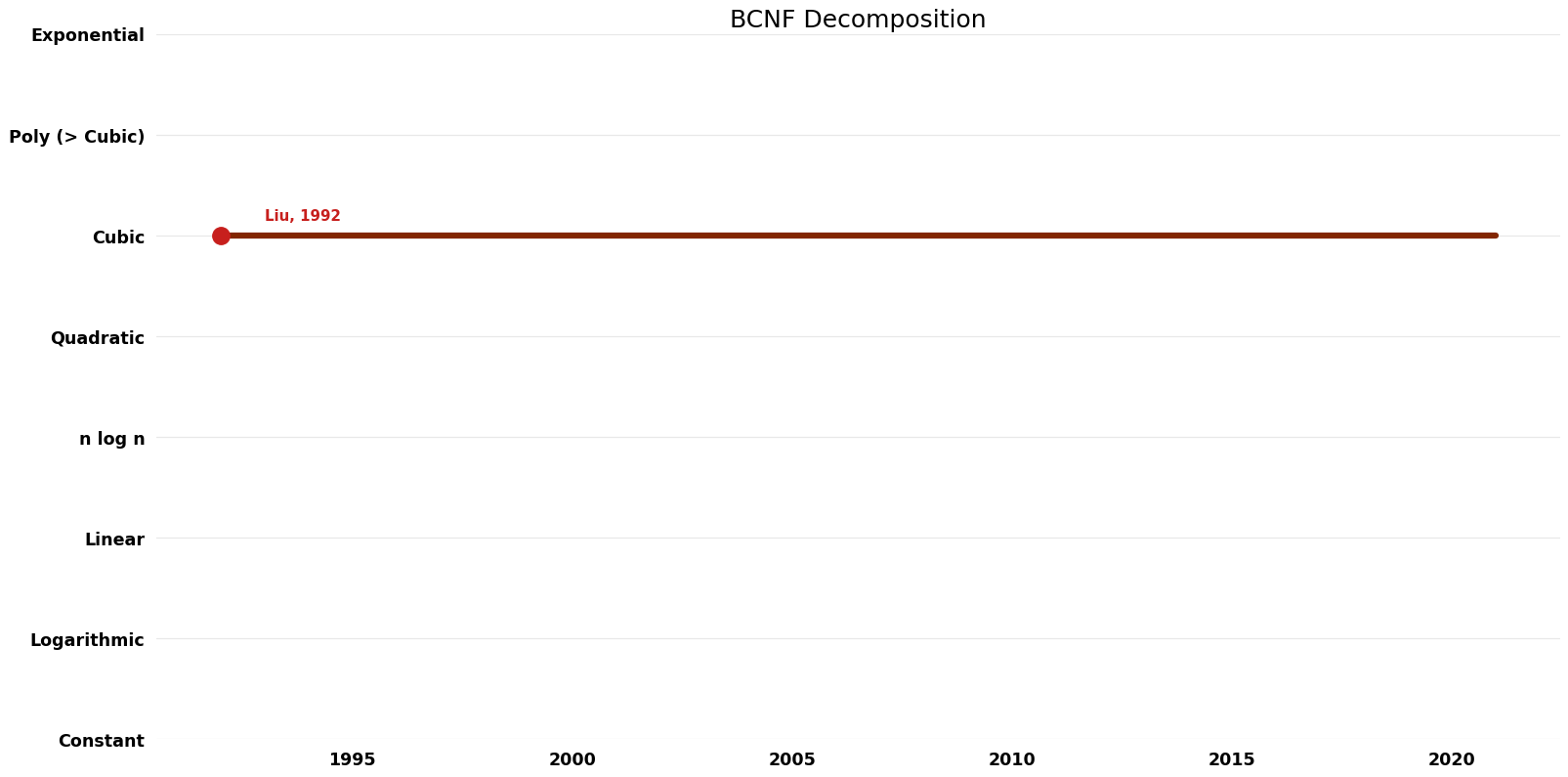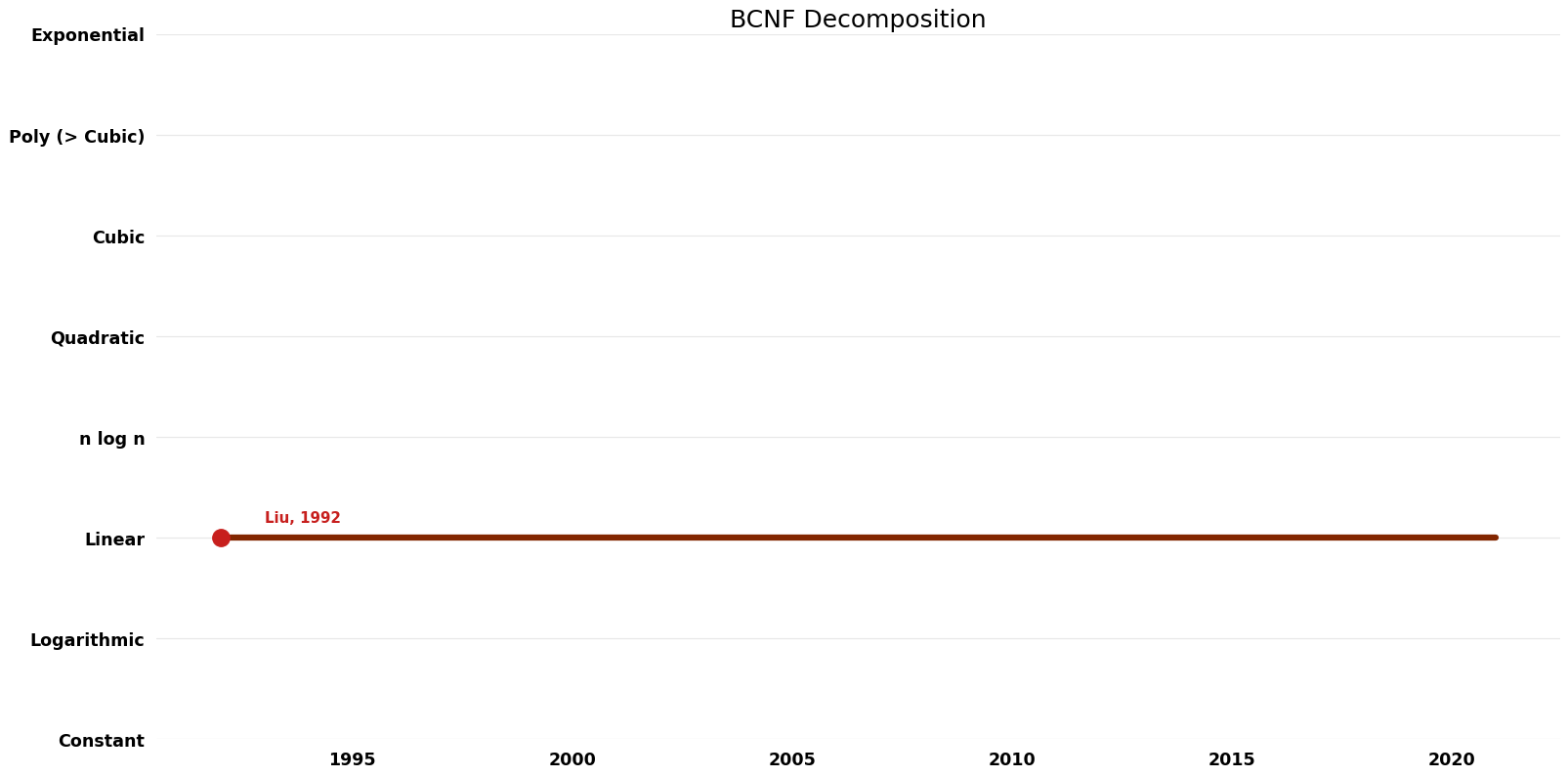BCNF Decomposition: Difference between revisions
Jump to navigation
Jump to search
No edit summary |
No edit summary |
||
| Line 18: | Line 18: | ||
Currently no algorithms in our database for the given problem. | Currently no algorithms in our database for the given problem. | ||
== Time Complexity | == Time Complexity Graph == | ||
[[File:BCNF Decomposition - Time.png|1000px]] | [[File:BCNF Decomposition - Time.png|1000px]] | ||
== Space Complexity | == Space Complexity Graph == | ||
[[File:BCNF Decomposition - Space.png|1000px]] | [[File:BCNF Decomposition - Space.png|1000px]] | ||
== Pareto | == Pareto Frontier Improvements Graph == | ||
[[File:BCNF Decomposition - Pareto Frontier.png|1000px]] | [[File:BCNF Decomposition - Pareto Frontier.png|1000px]] | ||
Revision as of 13:04, 15 February 2023
Description
BCNF Decomposition is the problem of decomposing a relation schema into Boyce-Codd normal form (BCNF).
A relation schema $R$ is in Boyce Codd Normal Form (abbr. BCNF) if for all non-trivial FDs $X \rightarrow Y$ in $F^+$, $X$ is a superkey. In extending this notion to database schemas, we must be conscious of the UR-assumption. We say that $R_i = <ATTR_i,F_i>$ is in BCNF if the schema $<ATTR_i, F^+(ATTR_i)>$ is in BCNF, and $D$ is in BCNF if each $R_i$ is.
Related Problems
Related: Decisional BCNF
Parameters
No parameters found.
Table of Algorithms
Currently no algorithms in our database for the given problem.


